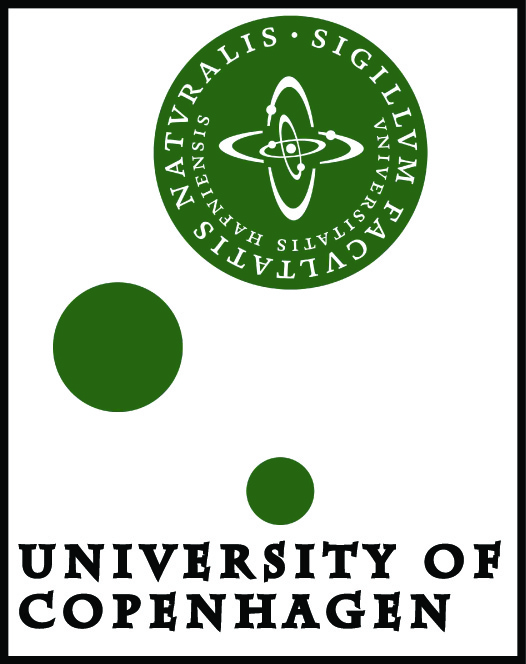|
|
Physical
Reference Models
- One-dimensional seismic reference models are known to be a non-unique
solution to global seismic data, hampering an interpretation in terms
of physical structure. Physical models that fit seismic data well
enough to be useful as a seismic reference model can significantly
facilitate physical interpretation of seismic structures.
Using the models?? Download
PREF upper mantle models (Cammarano et al., 2005)
|
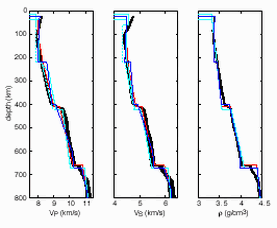 |
|
|
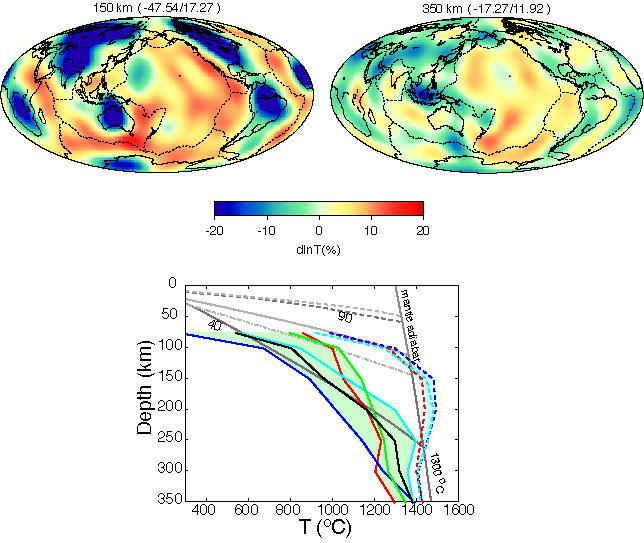 |
|
Waveform
Inversion for Temperature and Composition - Mineral physics
data are incorporated in an early stage of the process to directly map
lateral variations in temperature and composition. Our approach aims to
exploit the different effects that variations in temperature and
composition have on seismic waveforms (phase and amplitude) and it will
be based on the existing formalism for global elastic and anelastic
tomography (Gung and Romanowicz, 2003).
Poster
AGU 2005 |
Europa:
water and more... - Measurements of the seismic response of Europa
remotely from an orbiter or using a lander can greatly expand our
knowledge of the Jupiter's
moon internal structure. Besides probing the ice superficial shell,
seismic data may provide information about the interior thermal and
compositional structure of the moon.
We computed a family of physically consistent models, based on
different mantle & core composition and thermal structures. Seismic
response has been computed to test whether the signals can discriminate
between the different interior structures.
Download
Powerpoint Presentation
|
|
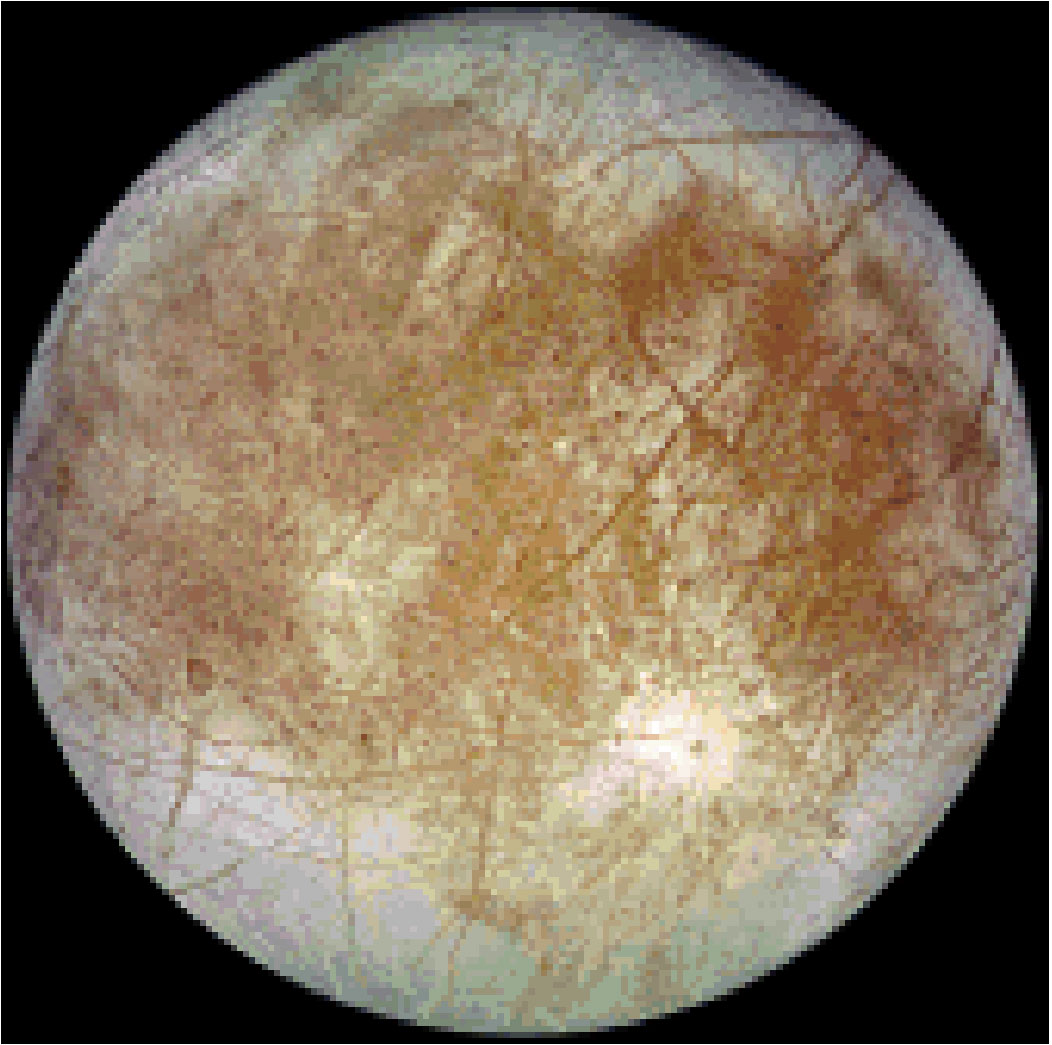 |
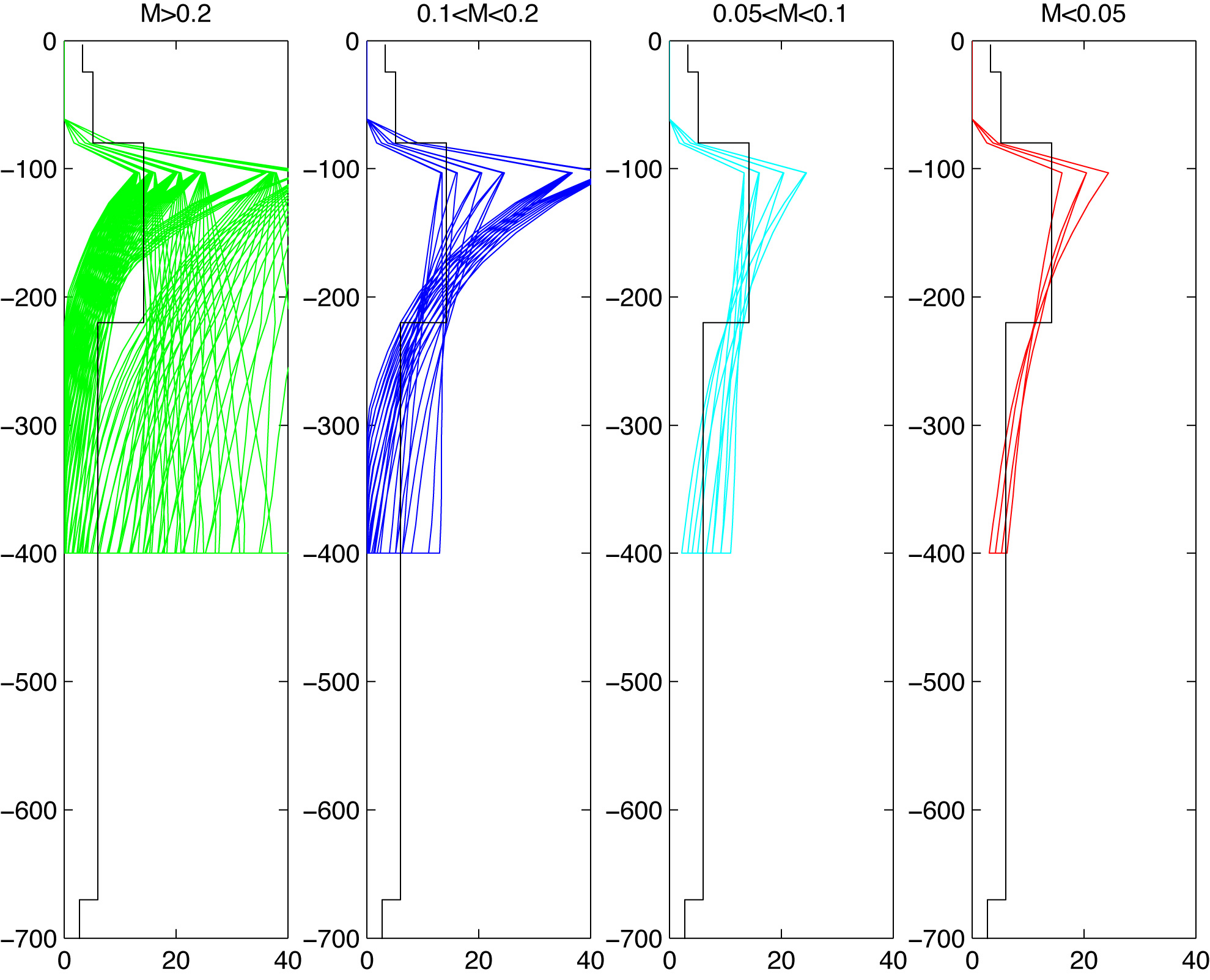 |
|
Q -Thermally activated, visco-elastic relaxation of the Earth's materials is responsible for intrinsic attenuation of seismic waves. Seismic observations have been used to define layered radially symmetric attenuation models independently from any constraints on temperature and composition. Here, we interpret free-oscillation and surface-wave attenuation measurements in terms of physical structures, by using the available knowledge on the physical mechanisms that govern attenuation at upper mantle (above 400km) conditions.
We find that observations can be explained by relatively simple thermal and grain-size structures. The 1-D attenuation models obtained do not have any sharp gradients below 100km, but fit the data equally well as the seismic models. The sharp gradients are therefore not required by the data.
|
In spite of the large sensitivity of seismic observations to temperature, a definitive interpretation is limited by the unknown effects of pressure on anelasticity. Frequency dependence of anelasticity, as well as trade-offs with deeper attenuation structure and dependence on the elastic background model are less important. Effects of water and dislocations can play an important role as well and further complicate the interpretation.
Independent constraints on temperature and grain-size expected around 100km depth, help to constrain better the thermal and grain size profiles at greater depth.
Q PAPER
GJI 2008
|
|
|
| Plumes
Whole mantle thermal plumes are well-established features in convecting models and are commonly invoked to explain the long-term presence of hot spot volcanism. Nevertheless, based mostly on geochemical arguments, there is no clear reason for the existence of "deep-mantle" plumes (you may find interesting to visit http://www.mantleplumes.org for alternative-to-plume hypothesis about the origin of Oceanic Island Basalts). In spite of the advances in seismic techniques, as using 3-D finite frequency sensitivity kernels, imaging plumes with seismology is still challenging. In particular, data coverage and regularization schemes hamper a clear response.
Here, we aim to use observations of differential times and attenuation (t*) between ScS and its multiples (ScSn) recorded, usually, in stations that are near to the seismic source.
|
To assess the sensitivity of thermal plumes to various observables, we convert a dynamically obtained thermal plume to seismic structure using a combination of elastic and anelastic properties. In doing this, we test extreme physical properties, for example two extreme T dependence of seismic attenuation.
We use the SHaxi (http://svn.geophysik.uni-muenchen.de/trac/shaxi) code to model the wave propagation and thus simulate the full synthetic waveforms for each model (see a wave propagation movie).
From the synthetics, we can extract differential times and t* values using the same processing used for data.
Download
WAVE PROPAGATION MOVIE
|
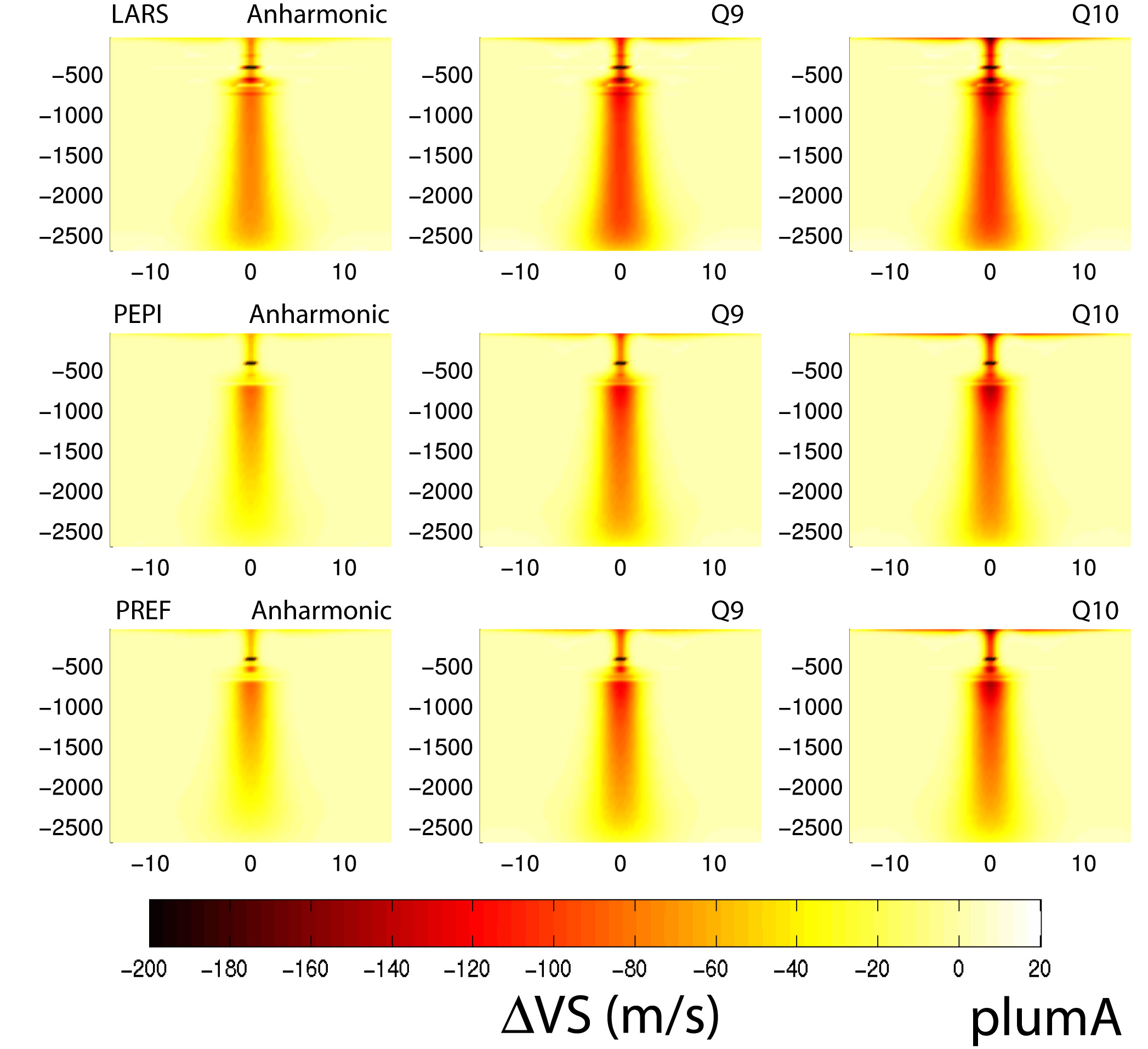 |
|
|
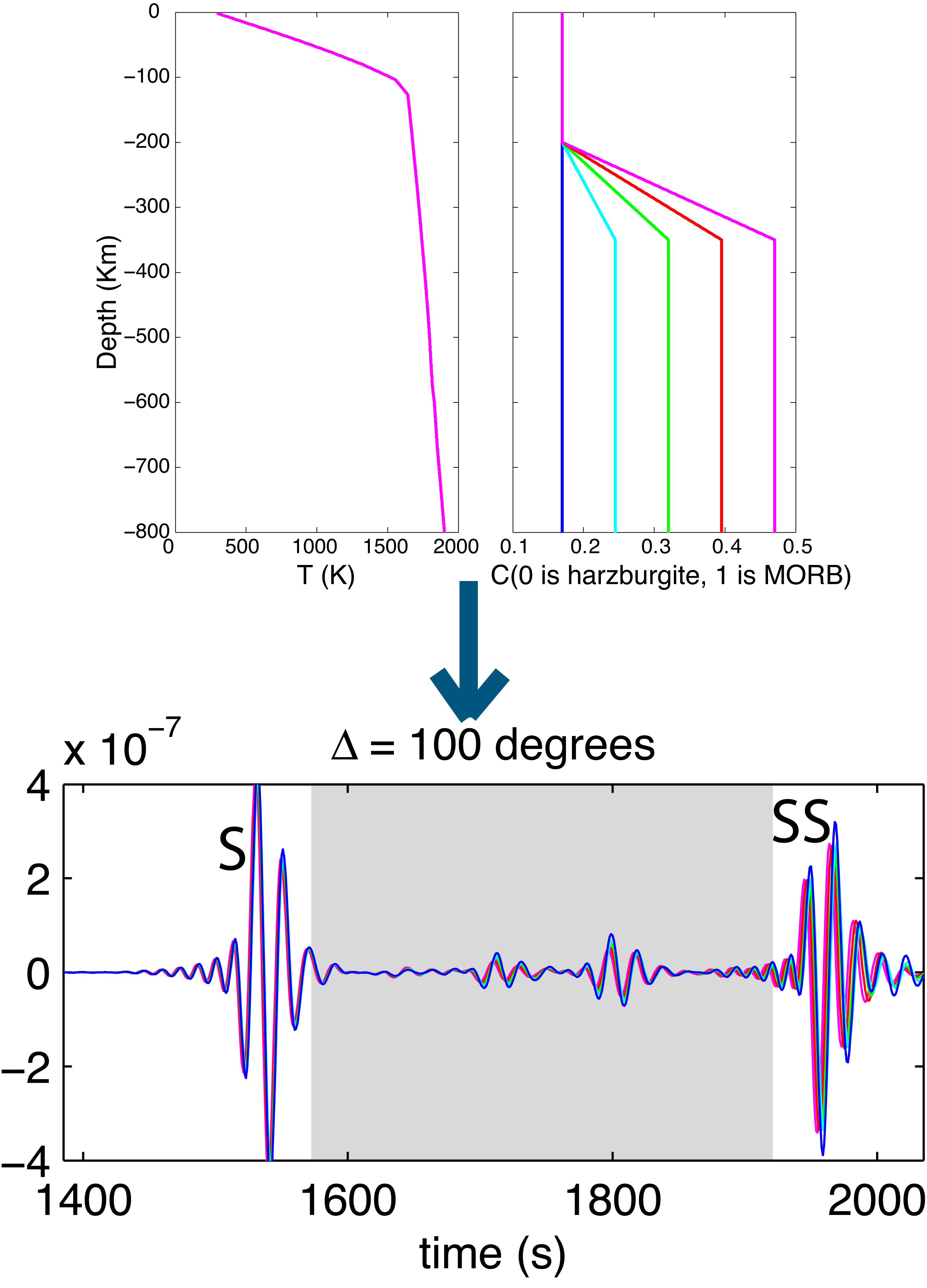 |
|
SS precursors -The steadily increasing number of SS precursors data, which are sensitive to the impedance jump of mantle discontinuities, is particularly useful to provide additional constraints on the T and C of the transition zone. Our goal is to include these complementary dataset into our inversion that is now based uniquely on long-period waveforms. Parametrizing our model in T-C will couple the SS precursors and long-period waveforms: i.e. varying T or C will affect all mantle structure and not only discontinuities. In addition, coupling of Vs and density is also guaranteed (that is good as SS are sensitive to impedance). We use data collected from Arwen and co-authors. We model SS precursors waveforms down to 10s using the same technique, i.e. normal-mode summation, commonly used for long-period waveforms. The synthetics are stacked and processed as the data. We proceed as follows: in the first step, we refine our average 1D model, through a parameter search for temperature and composition that best satisfies the average global stack of SS precursor together with long-period waveforms, free oscillation average frequencies and body wave travel times.
|
In a second step, we include constraints from SS precursor travel time data to simultaneously invert for 3D lateral variations in temperature and topography of the upper mantle discontinuities. Finally, we plan to add further constraints from SS precursor waveforms to iteratively constrain lateral variations in temperature and composition in the upper mantle.
DYSTEM DYnamic and STructure of the Earth's Mantle.
This is my European project. From one side, we intepret density and seismic waveform data for T and C based on a database of material properties at high P-T conditions. From the other, we use the same properties to compute geodynamical models and to predict geodynamical observables. We use the code STAG-YY on this purpose. We investigate the effects of uncertainties in material properties, in chemical compositions and seismic models (and data).
Using this fully cross-disciplinary approach, we are able to better constrain the current physical conditions of the Earth's mantle in the frame of the evolution of the planet. At the same time, we envisage to put tighter constraints on some key material properties in a near future.
Please, read about the results of my recent work and download Thermo-chemical models. Pages on Geophysical Inversion will be updated as soon as available.
Geophysical Inversion for T - C
Thermochemical mantle models
|
| | |







